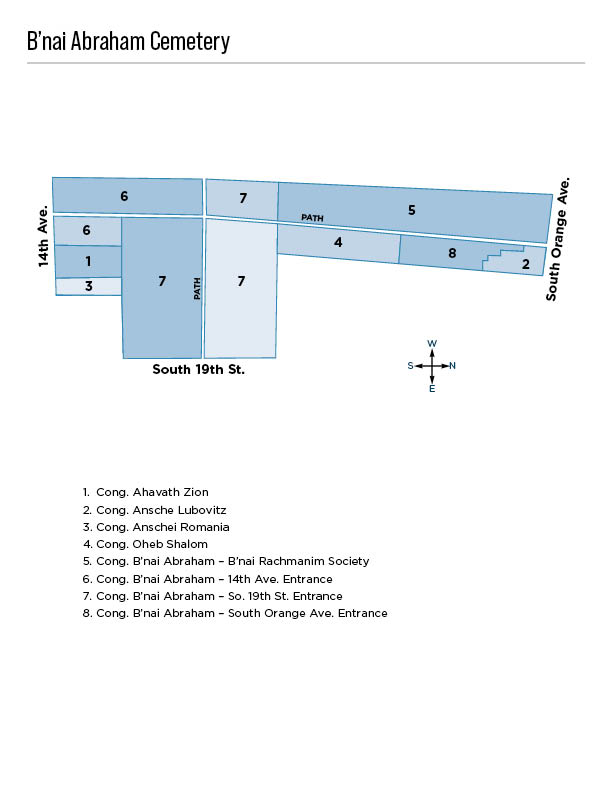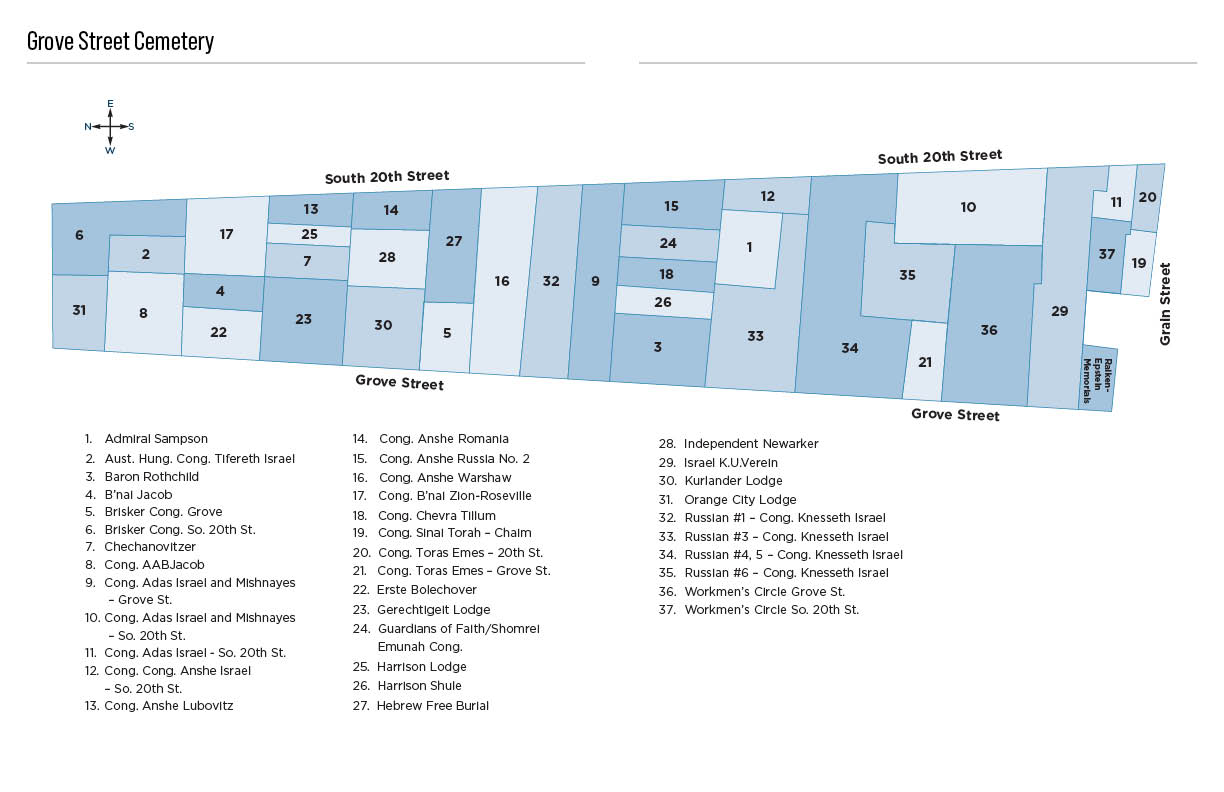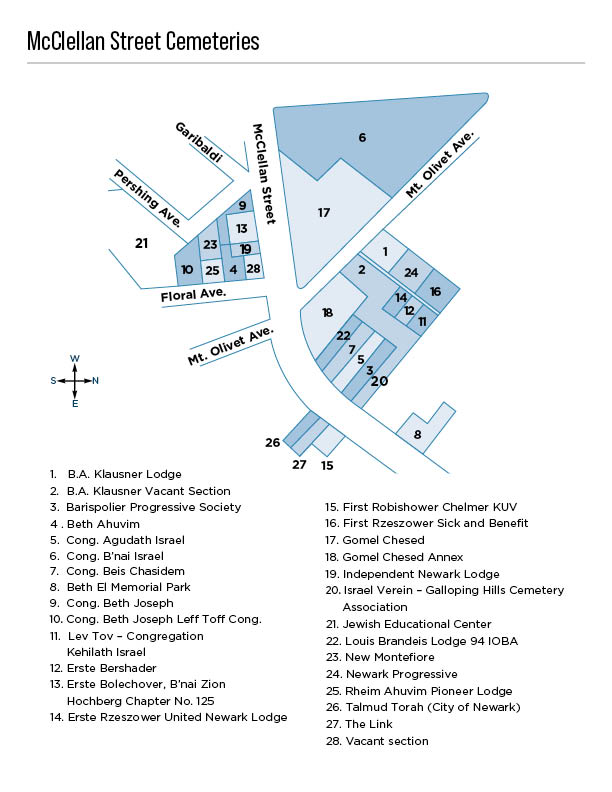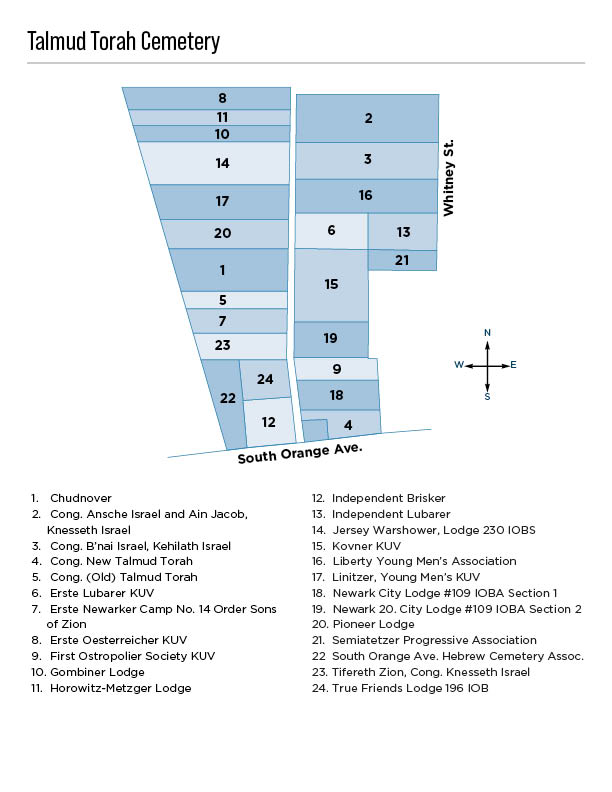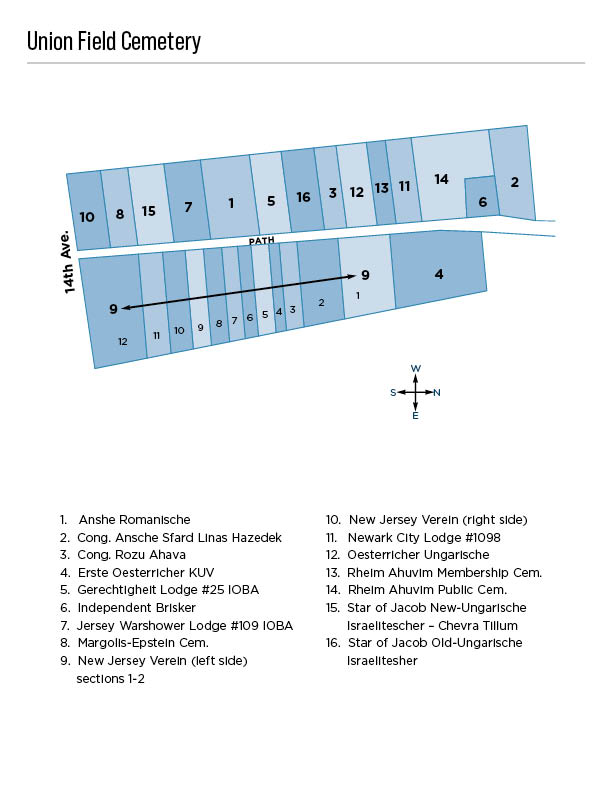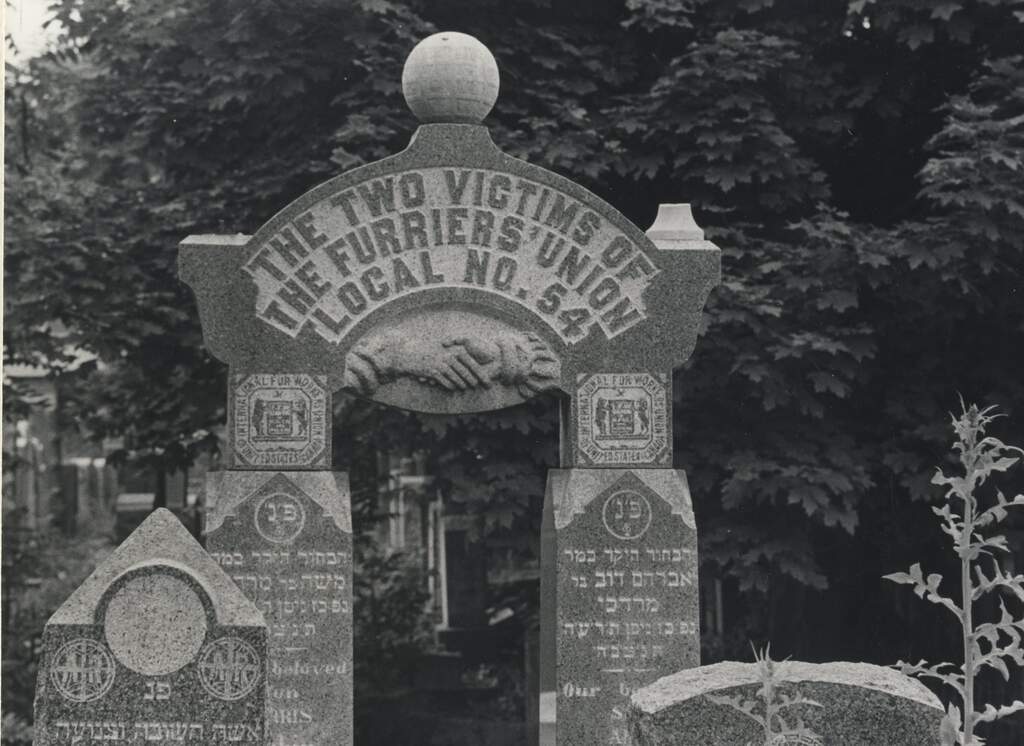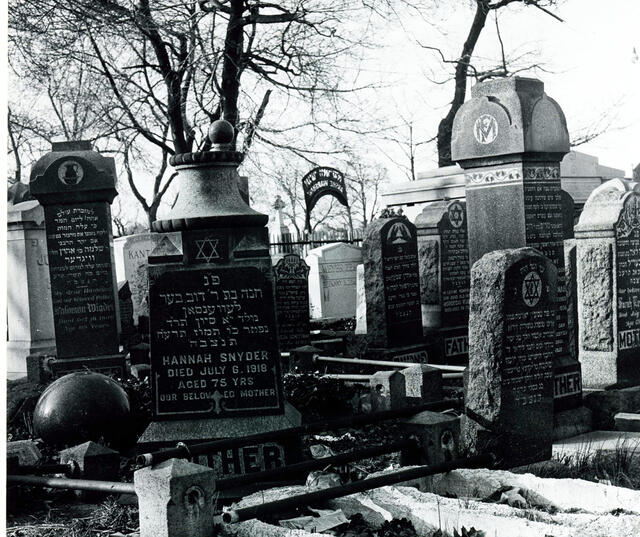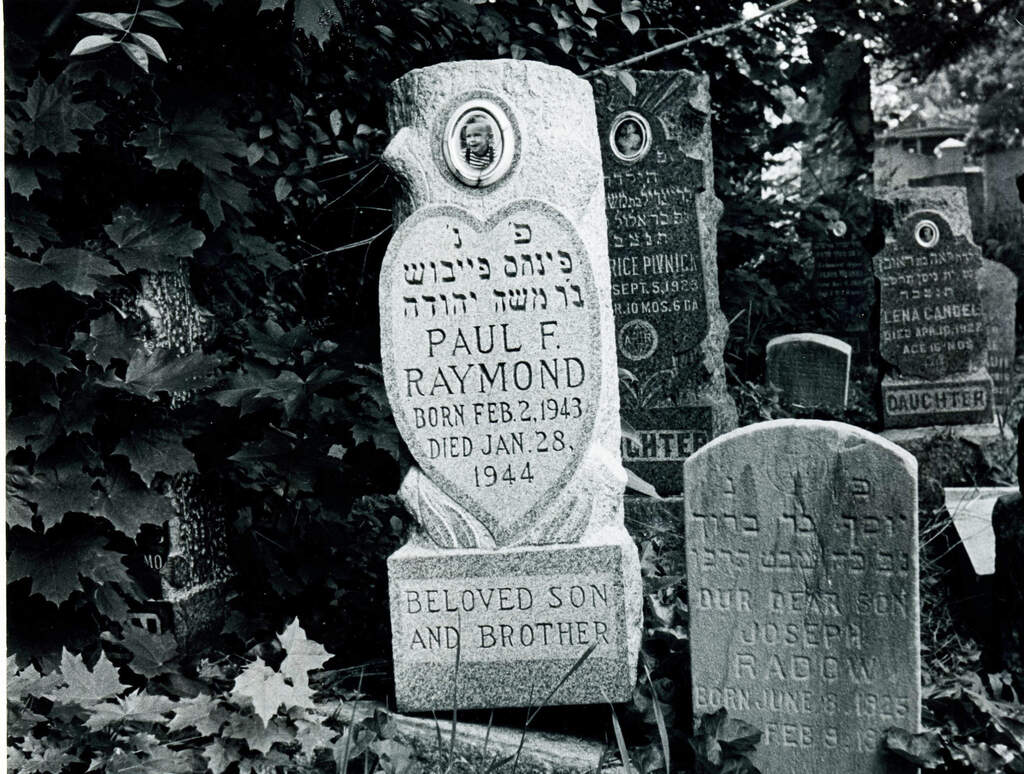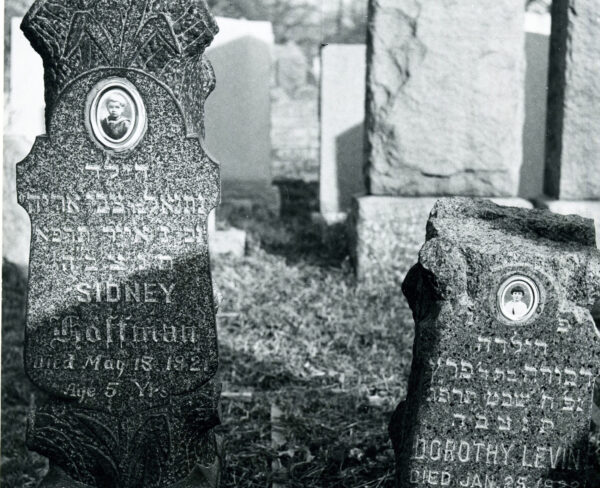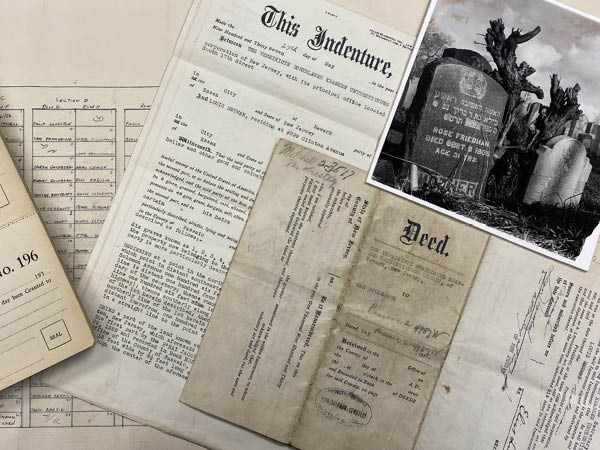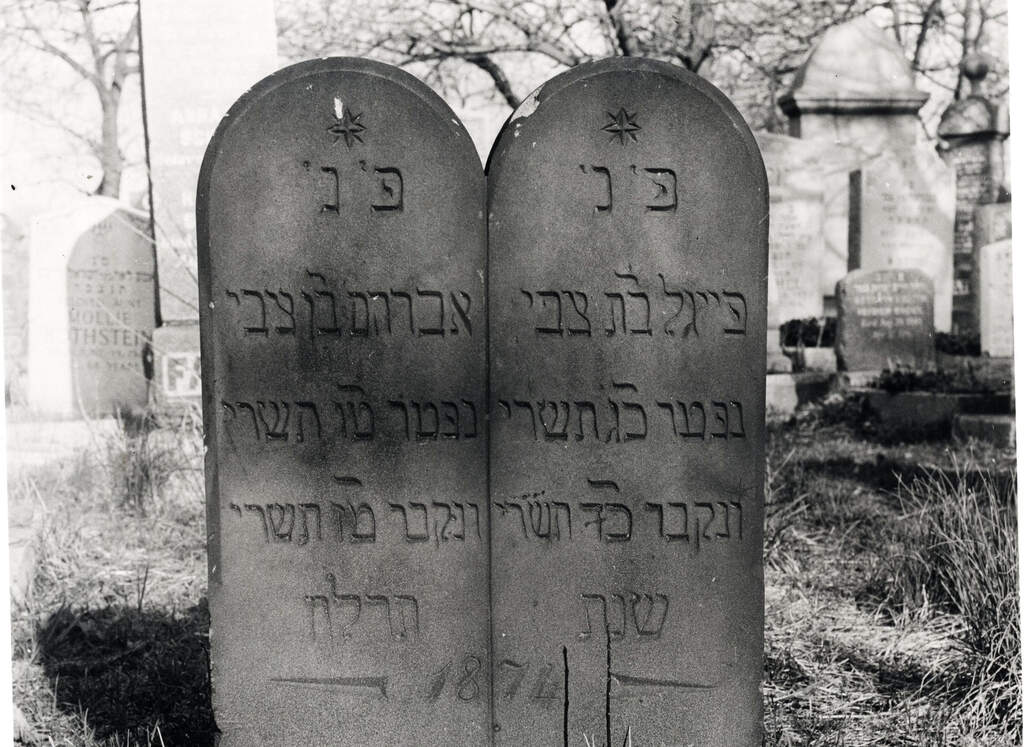
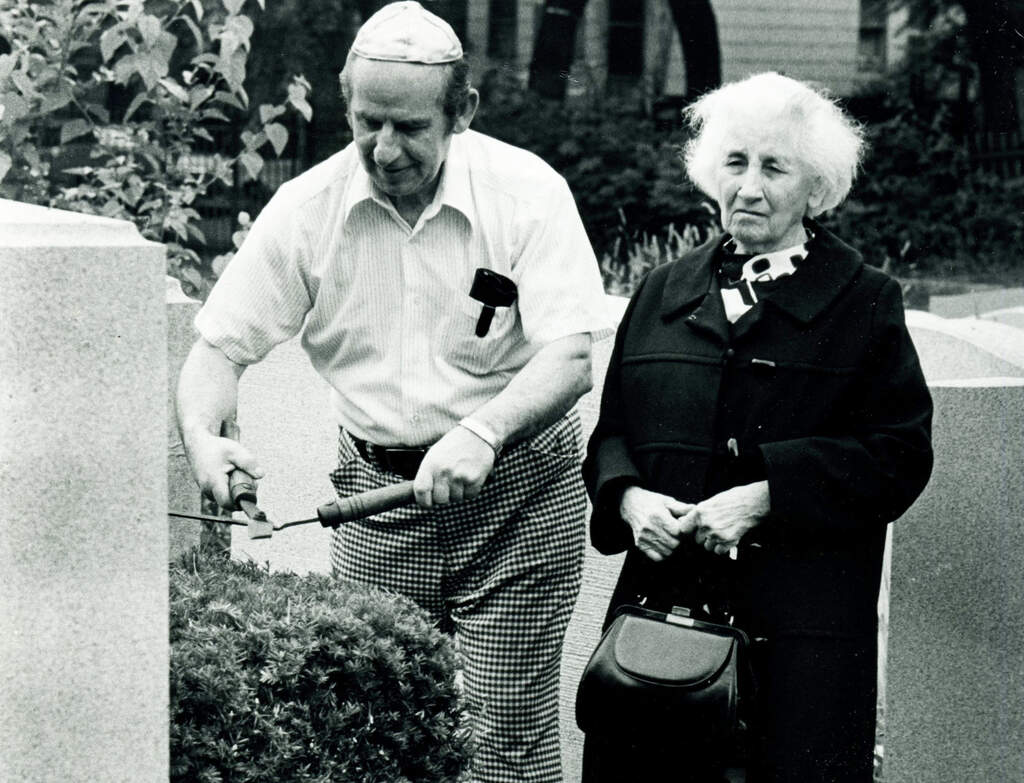
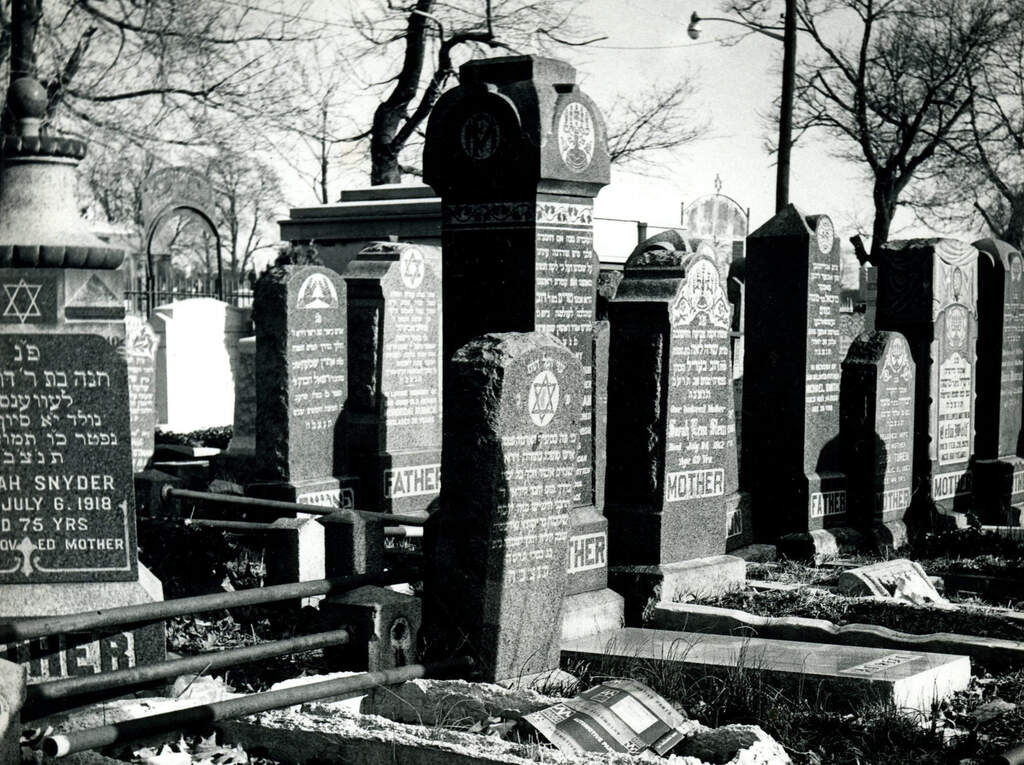
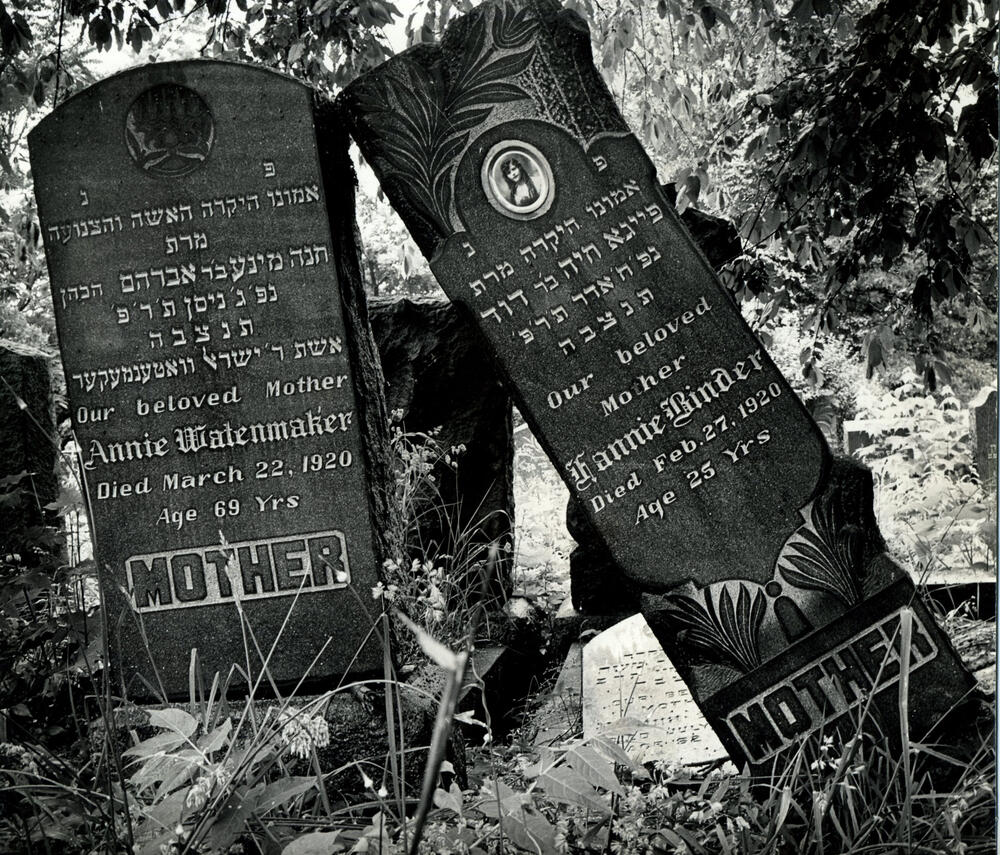
The Rich History
Many of the shuls in Newark developed around landslayt, groups of Jews from the same Eastern European towns, which often also operated as mutual-aid societies. Most of these groups formed officially registered landsmanshaftn which provided medical care, reimbursement of lost wages during illness, life insurance, funeral costs, emergency assistance, small interest-free loans, and, most importantly, a cemetery plot in an area owned by the society. Some of the plots were independent; most were connected to synagogues, unions, extended family circles, or fraternal orders.
The burial plots of the Newark landmanshaftn are scattered among the 113 Newark Jewish cemeteries. Only two of these individual cemeteries are currently owned by organizations that are still active today. The largest is the Grove Street Cemetery established in 1901 at 211-304 Grove Street. It has 37 separate burial grounds, containing the remains of Eastern European immigrants.
The Jewish cemeteries in Newark were first used in the mid-1800s, but most of the graves are from the first half of the twentieth century.
A deed registered in Newark in February 1847 states that, for the sum of $50, a parcel of land was purchased which became the Belmont Cemetery, the first cemetery used by the members of the Mendelsohn Benevolent Society and Congregation B’nai Jeshurun. This is the earliest known Jewish cemetery in Newark but it is no longer in existence.
Newark’s Jewish cemeteries are like a window into past time. We can get a glimpse of the once vibrant Jewish community in this city and we can also find great beauty in the headstones, their artwork, and inscriptions.
For more information about the Jewish Historical Society or to find out how to add your collection to our archives, contact Jill Hershorin, Archivist and Curator.
Restoring Dignity to Our Ancestors
As the Jewish community of Newark relocated to nearby suburbs, little or no provisions for the upkeep of the cemeteries remained as no funds had been set aside for perpetual care. Today, the cemeteries contain approximately 60,000 Jewish graves. Most of the cemeteries are crowded, with heavy headstones that are placed close together. Vandalism, age, and growing tree roots have caused hundreds of headstones to topple.
No other organization but Federation and its supporters can secure and protect these historic cemeteries, which represent both a link to the Jewish community of Newark and to the history of our Greater MetroWest community. Sadly, the cemeteries had fallen into disrepair due to aging, vandalism, and lack of available funding. In response, Federation stepped in to provide emergency funding, including, replacing destroyed and ineffective fencing, by building high fences around the cemeteries in order to prevent vandalism in 2018 and removing trees in 2020, enabling proper maintenance and lifting and resetting the headstones.
To fully restore the cemeteries to their proper dignity, additional funds are needed to:
- Anticipate increased cost of basic maintenance
- Cover unanticipated repairs beyond basic maintenance
- Enable improvements, such as better signage
To learn more about how to support these efforts, contact Sara Chambers, JCF Director of Stewardship and Targeted Giving, (973) 929-3049.
Documenting the Cemeteries for Future Generations
Most of the graves in the Newark cemeteries are documented in the JewishGen Worldwide Burial Registry (JOWBR) and each entry generally includes the individual’s name, date of birth, date of death, and location in the cemetery. With the help of volunteers, we hope to photograph the gravestones and send them into the database so that a photograph can accompany the burial information. These photos will offer an opportunity for people living far away to “visit” their loved ones in these cemeteries, as well as to preserve the historical value of the graves.
Maps
